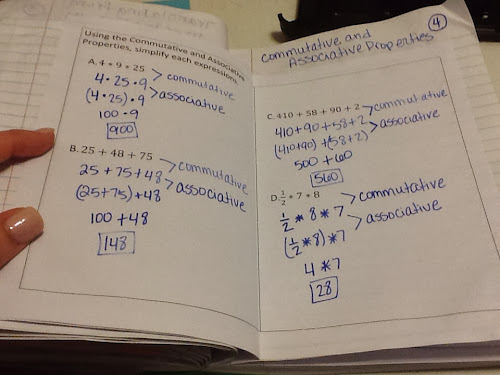I have found that I have success in teaching when I am able to present a concept properly to the students with full definitions, correct vocabulary, and examples outlined with strategy. I leave nothing questionable or allow something to be called "that thing". I have also learned that if a strategy, method, object, concept, term etc., has a name, students learn, relate, retain, and apply them more.
This technique is very easy for me in Geometry. Geometry is my specialty to teach; however, Algebra 1 has been a nightmare.
Key problem: I teach kids how to do the math and then they ask me WHY?
And I can't answer them because sometimes I don't know why. I never questioned what I was taught; it's just how you do the math. This needs to change.
My goal this year has been to raise my skill level in teaching Algebra 1 to my skill level of teaching Geometry. It has been slow. I am extremely behind. There's no excuse. And I'm freaking out! But there are positive results. My students understand and use what I have taught them. Some of the most difficult concepts for me to teach, have become easier and more approachable. I'm beginning to see the flow of Algebra 1 and how it builds upon each concept. With Geometry, it just clicked. The struggle I've had with Algebra 1 has been the sequence. I've asked, and I couldn't find an answer. This year, I decided to pick up the textbook as my core resource pulling in CSCOPE materials, EOC prep materials, and other supplemental materials.
This is a look at our journal for the first semester. We haven't even made it half way through the journal!
Here's one area that has kicked my tush every time I try to teach it: Simplifying Algebraic Expressions. When it arrived on the horizon, I spent a large amount of time researching other teachers' strategies. I typed up my journal page pulling information from the textbook along with thoughts found on Math=Love. I liked how she took the time to define each part and show how the term can be expanded and seen in different ways. This made a difference, and answered several questions from students throughout the unit. The definition of combining like terms was referenced multiple time. For instance, a student wanted to change the exponent when adding x and x to x squared. I refered the student to the definition followed by guiding questions.
Another strategy/activity I loved was "Sorting Like Terms". A colleague of mine writes pairs of terms on cards and students have to decide on Like or Unlike and justify.
Here's my journal page on Simplifying Algebraic Expressions.
When we got to the example adding distribution into the mix, we discuss the operations behind distribution and combining like terms and then determine the proper order based on GEMDAS.
And I love when some student says "you do the parenthesis first". That drives me crazy!!!!! We analyze that comment and what it really means in relation to GEMDAS and what operation distribution represents.
Instead of dropping one practice assignment on my students, I have three different assignments spread out over a week that we keep going back to. This helps them review and retain the skills of combining like terms. I want them comfortable and confident with this skill. Kuta Software has multiple practice pages and at different levels. There skills are improving!!











































